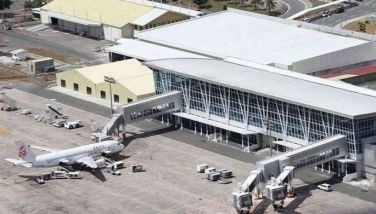Dr. Amy breaks the surface
MANILA, Philippines – Earlier methods of skin resurfacing have made the treatment more painful than it sounds. Thanks to radiofrequency, the waves we only thought to be carrying radio signals are now used to influence skin science.
Skin resurfacing, in layman’s term, is the removal of the upper layer of the skin to allow the formation of a new, healthier layer. It is used to reduce hyperpigmentation and skin roughness as in the case of wrinkles and acne scars. In the past, these mechanical devices such as dermabrasion, chemical peeling compounds and laser were among the most effective procedures, yet the most excruciating. Fractional skin resurfacing (FSR) — or ablating the skin through microscopic dots — using laser was developed to minimize the discomfort and allow faster healing. However, the treatment continued to be as painful so the use of anesthetics was required.
In a search for a non-surgical and minimally painful procedure to get rid of acne scars, the author was referred by skin-care buffs to Dr. Amy Patdu, a member of the Philippine Association of Primary Skin Health Physicians and the pioneer of EndyMed’s 3DEEP RF technology in the Philippines.
EndyMed’s 3DEEP technology is a US FDA-approved radiofrequency energy source that can be used for different applications such as body contouring, body tightening, facial tightening and fractional skin resurfacing.
 The 3DEEP fractional skin resurfacing helps in providing a smoother, brighter skin surface and reduced hyperpigmentation.
The 3DEEP fractional skin resurfacing helps in providing a smoother, brighter skin surface and reduced hyperpigmentation.“Unlike the one with laser, fractional skin resurfacing using radiofrequency (RF) is less painful and has less downtime,” quips Patdu. “RF doesn’t damage the epidermal junction. If that area is damaged, sometimes it causes permanent hyperpigmentation or redness. And laser only reaches the upper layer while the RF energy goes deep into the dermal layers.” For a long-term effect, the deep area is treated with non-ablative dermal heating to boost collagen reformation. As everybody knows, collagen is a protein that gives skin its structure and the appearance of smoothness and youth.
I agreed to undergo three monthly sessions of FSR and to my surprise(!), the scars’ depth got reduced. The resulting skin redness after each treatment was accurately momentary and the scabs or microscopic dry crusting on my face lasted for only four days. Patients could safely put makeup on the treated area, that when I attended an event three days after an FSR session, the scabs went pretty unnoticeable.
Earlier this year, Patdu, joining the Israeli EndyMed group, delivered a talk at the Aesthetics Convention in Hanoi, Vietnam. She is set to speak in another convention in Singapore this month.
Unlike other RF technologies in the market, 3DEEP uses multiple RF generators and a complex process to manage energy flow between sets of electrodes — or the distributors of the energy. The patented process significantly reduces the energy flowing along the skin’s surface and eliminates the need for cooling.
Patdu, the only dermatologist with EndyMed Pro in the country, illustrates the difference between various RF types. “Monopolar RF also reaches the deeper layer of skin but it only has one energy generator and one very small electrode. All the energy goes to one electrode, making the process very, very painful. Anesthesia is usually required,” she says. There is an improved version that uses a cooling tip but it is still very painful due to the high concentration of energy. “And it’s not very safe,” Patdu warns. “Since there is only one electrode, there is no way for the energy to go back to the machine. A pad is placed behind the patient so that the energy will go out of the body. If something wrong happens to the pad or if any metal is attached to the patient’s body, an accident is possible. So, safety issues and pain are the problems with monopolar RF, but the penetration of energy is deep so the result is good.”
Bipolar, tripolar and multipolar RF each have one generator but different electrodes. The doctor goes to explain: “The problem is that two or more electrodes share the same generator so the energy goes back to the machine and the concentration of energy on the skin is low. It only reaches the upper layer of the skin.” With skin tightening, the clients will only see short-term contraction and there’s no reformation of collagen.
The 3DEEP RF by EndyMed has six generators, each with its own electrode. “It’s very safe because the energy goes back to the machine. And by principle, the combined concentration of energy forms a layering that reaches the dermal or deep layer. FSR treatment is less painful while skin tightening is totally painless.”
Each FSR session lasted for as short as 10 minutes and I heaved a sigh of relief as it went much less painful than a regular facial treatment, with the pricking and all. No medication was prescribed, Patdu just gave simple instructions, i.e., I should use warm water when washing my face, avoid direct sunlight and use sunblock. And that’s it!
* * *
(For inquiries, visit Patdu MD Medical Clinic at Unit 103 Admiralty Bldg., 1101 Alabang-Zapote Road, Alabang, Muntinlupa City or call 818-AMY8. For best results, consult your doctor.)
- Latest





























